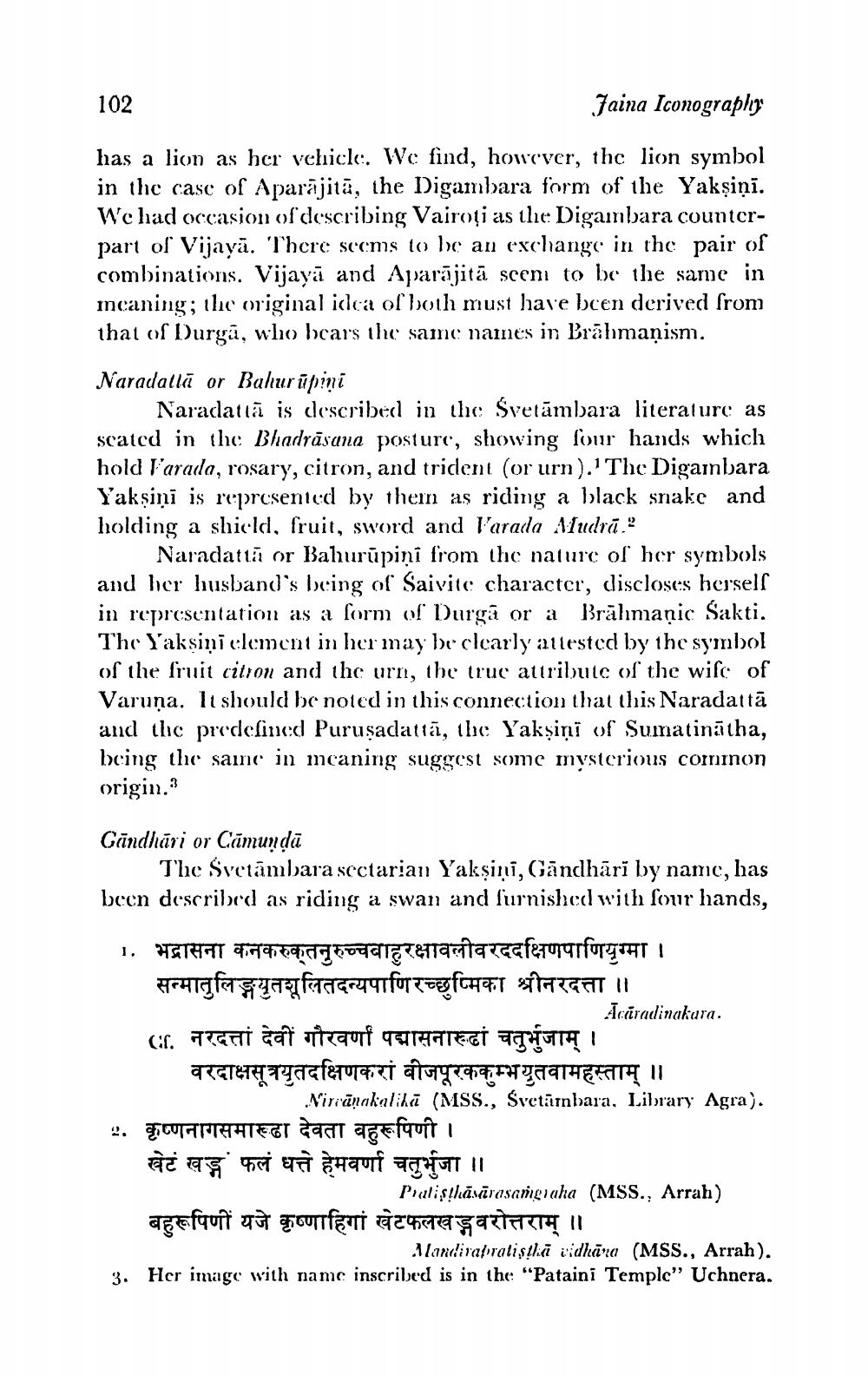________________
102
Jaina Iconography
has a lion as her vehick:. We find, however, the lion symbol in the case of Aparājitā, the Digambara form of the Yakșiņi. We had occasion of describing Vairoți as the Digambara counterpart of Vijaya. There seems to be an exchange in the pair of combinations. Vijaya and Aparājitā sceni to be the same in meaning; the original idea of both must have been derived from that of Durgā, who bears the same names in Brāhmanism.
Naradatlā or Bahurūpini
Naradattā is described in the Svetāmbara literature as scated in the Bhadrāsuna posture, showing four hands which hold l'arada, rosary, citron, and trident (or urn).' The Digambara Yakşiņi is represented by thein as riding a black snake and holding a shield, fruit, sword and l'araila Mudrā.?
Naradatta or Bahurūpini from the nature of her symbols and her husband's being of Saivite character, discloses herself in representation as a form of Durga or a Brāhmaṇic Sakti. The Yaksiņi element in her may be clearly attested by the symbol of the fruit citron and the urn, the true attributc of the wise of Varuņa. It should be noted in this connection that this Naradattā and thic predefined Puruşadattā, the Yakṣiṇī of Sumatinātha, being the same in meaning suggest some mysterious common origin.:
Gandhāri or Crmundā
The Svetambara sectarian Yaksini, Gāndhāri by namc, has been described as riding a swan and furnished with four hands,
1. भद्रासना कनकरुक्तनुरुच्चबाहुरक्षावलीवरददक्षिणपाणियुग्मा । सन्मातुलिङ्गयुतशूलितदन्यपाणिरच्छुष्मिका श्रीनरदत्ता ।
Acaradinakara. E. नरदत्तां देवी गौरवर्णां पद्मासनारूढां चतुर्भुजाम् । वरदाक्षसूत्रयुतदक्षिणकरां बीजपूरककुम्भयुतवामहस्ताम् ।।
Nirvānakaliki (MSS., Svetārbara, Library Agra). 9. CUTTERTHTEGT aan eefourt i खेटं खङ्ग फलं धत्ते हेमवर्णा चतुर्भुजा ।।
Pulisthānīrasangvaha (MSS., Arrah) बहरूपिणी यजे कृष्णाहिगां खेटफलखङ्गवरोत्तराम् ॥
Mandirafiralistic vidhāna (MSS., Arrah). 3. Her image with name inscribed is in the "Pataini Templc" Uchnera.




